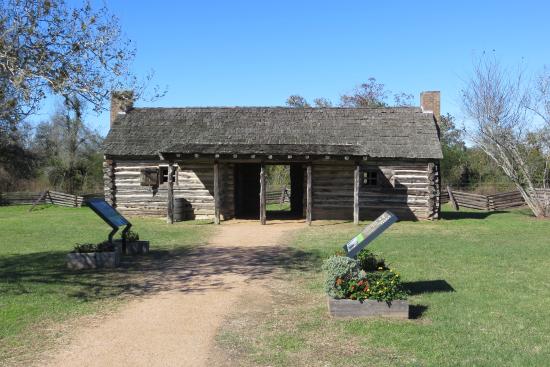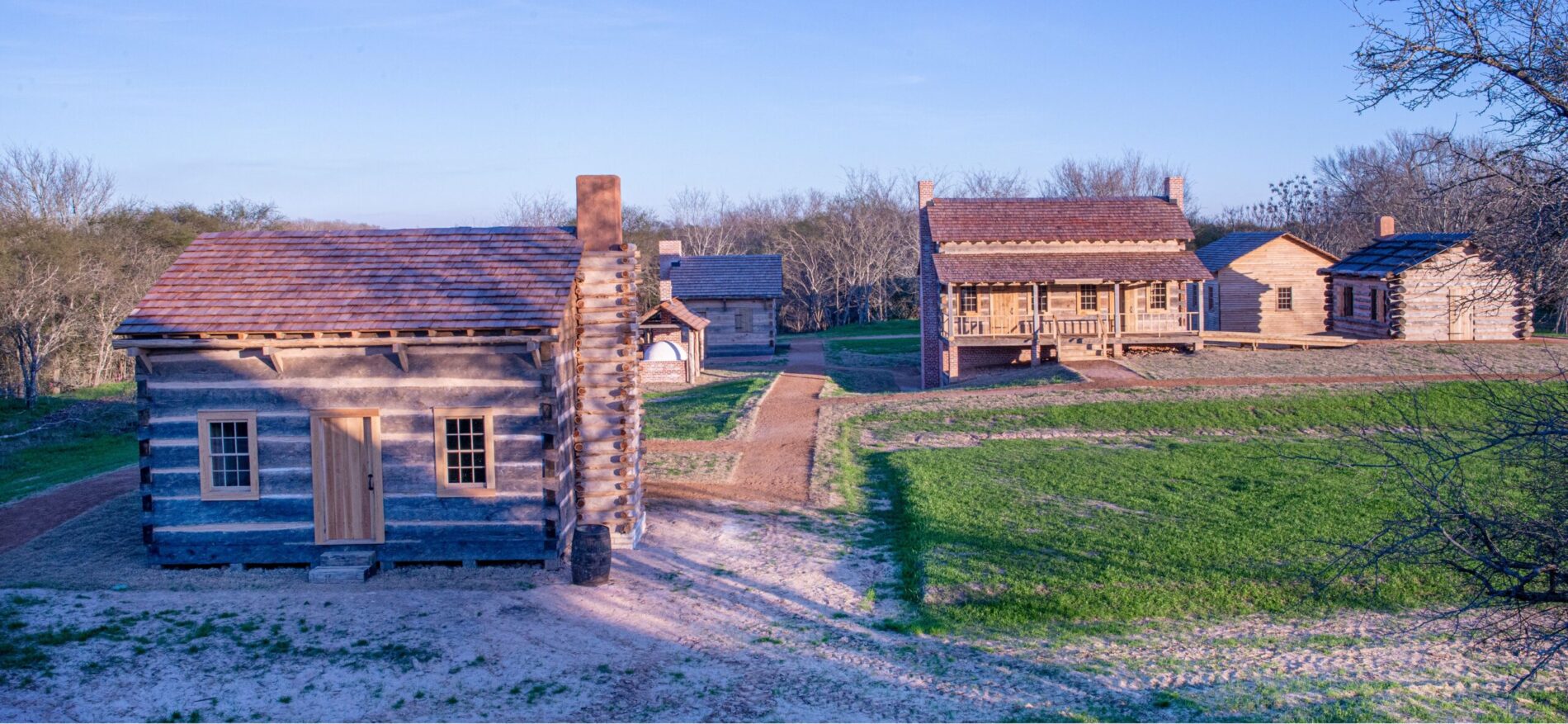
San Felipe de Austin: The Crucible of Texas
In the sprawling, sun-baked landscape of modern Texas, where glittering skylines pierce the heavens and superhighways hum with endless traffic, it’s easy to overlook the quiet, unassuming patch of land that once served as the beating heart of a nascent republic. Yet, just an hour west of Houston, nestled along the banks of the Brazos River, lies San Felipe de Austin – a place whose very name echoes with the genesis of Texas. More than just a historic site, San Felipe de Austin is the crucible where Anglo-American dreams collided with Mexican sovereignty, where the seeds of revolution were sown, and where the very identity of Texas was forged.
To understand San Felipe is to understand Stephen F. Austin, the visionary empresario often hailed as the “Father of Texas.” It was his audacious dream, inherited from his father Moses, to colonize this vast, untamed territory under the banner of Mexico. In 1823, after a arduous journey and careful deliberation, Austin meticulously laid out the plans for a new settlement at a strategic bend in the Brazos River. He envisioned a capital for his growing colony, a place where the promises of fertile land and new beginnings could take root. This was San Felipe de Austin.
The Birth of a Colony: Dreams and Hardships

Austin’s initial grant from the Mexican government allowed him to bring 300 families, known to history as the "Old Three Hundred." These early settlers, a diverse mix of farmers, artisans, and adventurers, arrived with little more than hope and the strength of their own hands. Life in San Felipe was a testament to frontier resilience. Log cabins, hewn from the abundant timber, sprang up amidst the dense woods. Families cleared land, planted crops – primarily cotton, which would become the economic engine of the colony – and faced the myriad challenges of a wild frontier: disease, isolation, and occasional skirmishes with indigenous tribes whose ancestral lands they now occupied.
San Felipe quickly grew beyond a mere collection of cabins. It became the administrative, commercial, and social hub of Austin’s Colony, which at its peak encompassed some 11 million acres and housed thousands of Anglo settlers. Here, the first land office in Texas operated, processing grants and settling disputes. It boasted the colony’s first post office, a crucial link to the outside world, and published the Texas Gazette, the territory’s first newspaper, which served as a vital forum for communication and, increasingly, political discourse. Lawyers, merchants, and doctors set up shop, transforming the rugged outpost into a thriving frontier town that, by 1830, was home to an estimated 200 residents, with thousands more in the surrounding area.
A Microcosm of Conflict: Mexican Rule and Anglo Aspirations
San Felipe de Austin was a fascinating, often contradictory, experiment in cultural assimilation. The settlers swore allegiance to Mexico, promising to become Catholic and abide by Mexican law. Yet, their Anglo-American traditions, Protestant faith, and a deep-seated desire for self-governance often clashed with the centralizing tendencies of the Mexican government. Stephen F. Austin, fluent in Spanish and deeply committed to the success of his colony, played an almost impossible role as mediator, constantly navigating the delicate balance between his settlers’ demands and Mexico’s expectations.
One of the most contentious issues was slavery. While Mexico had abolished slavery, Austin’s colonists, many of whom came from the American South, relied on enslaved labor to cultivate their lucrative cotton fields. Austin, ever the pragmatist, managed to secure temporary exemptions and workarounds, but this underlying tension further complicated the relationship between the colonists and their sovereign.
As the years passed, the demographic balance shifted dramatically. By the mid-1830s, Anglo-Americans significantly outnumbered Mexican citizens in Texas. San Felipe, as the de facto capital of Anglo Texas, became the focal point for their grievances. Conventions were held here, including the Conventions of 1832 and 1833, where colonists drafted petitions to the Mexican government, seeking reforms like separate statehood for Texas and a repeal of the Law of April 6, 1830, which prohibited further Anglo-American immigration.
It was during these tense years that Stephen F. Austin’s leadership was most acutely tested. After the 1833 convention, he traveled to Mexico City to present the colonists’ petitions, only to be imprisoned for over a year on suspicion of insurrection. His incarceration, though unjust, profoundly changed his perspective. Upon his release and return to Texas in 1835, he found a colony on the brink of revolt. The centralist policies of Mexican President Antonio López de Santa Anna, who had dissolved the Mexican federal constitution and sought to exert tighter control over all provinces, pushed the colonists to the breaking point.
The Inevitable Clash: Cradle of Revolution

San Felipe de Austin, once the symbol of peaceful colonization, now transformed into the crucible of revolution. It was here, in the fall of 1835, that Stephen F. Austin, after years of advocating for peaceful negotiation, reluctantly declared his support for armed resistance. "War is our only recourse," he is famously quoted as saying, though the precise wording varies, the sentiment was clear: "There is no other remedy but to go for independence." This was a monumental shift for the man who had dedicated his life to working within the Mexican system. His endorsement galvanized the Texans, signaling that all avenues for peaceful resolution had been exhausted.
The General Council of the provisional government of Texas met in San Felipe, further solidifying its role as the nerve center of the nascent rebellion. From its dusty streets, orders were issued, strategies debated, and the very concept of an independent Texas began to take tangible shape.
The Sacrifice: Burning of San Felipe
The climactic moment for San Felipe de Austin arrived in March 1836. Following the catastrophic defeat at the Alamo and the Goliad Massacre, General Sam Houston, commander of the Texan army, ordered a strategic retreat eastward, drawing Santa Anna’s larger forces deeper into Texas. This desperate flight became known as the Runaway Scrape, as thousands of terrified settlers abandoned their homes, fleeing before the advancing Mexican army.
San Felipe, situated on a vital crossing of the Brazos River, presented a strategic dilemma. It was a potential supply base for Santa Anna and a convenient place for his troops to rest and regroup. To deny the enemy these advantages, and to prevent the town from falling into Mexican hands, Houston ordered its destruction. On March 29, 1836, the residents of San Felipe, under the command of Moseley Baker, set fire to their own homes and businesses.
It was an act of profound sacrifice, a symbol of the Texans’ desperate resolve. The smoke rising from the burning town carried with it not just the physical structures of a frontier capital, but also the hopes and dreams that had been invested in it for over a decade. As the flames consumed their homes, the people of San Felipe scattered, becoming refugees in their own land, their future uncertain.
A Ghost of Glory: Legacy and Preservation
After the Battle of San Jacinto in April 1836, which secured Texas independence, some settlers returned to the ruins of San Felipe. Efforts were made to rebuild, but the town never fully regained its former prominence. The new Republic of Texas established its capital elsewhere, first at Columbia (West Columbia), then Houston, and eventually Austin (named in Stephen F. Austin’s honor, though he never lived to see it). Other towns, with better river access or more strategic locations for the new republic, overshadowed San Felipe. The once-bustling crossroads faded into a quiet agricultural community, a ghost of its former glory.
Today, San Felipe de Austin State Historic Site stands as a powerful testament to this pivotal era. Managed by the Texas Historical Commission, the site offers visitors a profound journey back in time. A modern, engaging museum tells the story of Austin’s Colony, the challenges faced by the Old Three Hundred, and the dramatic events that led to the Texas Revolution. Interactive exhibits, archaeological finds, and informative displays paint a vivid picture of life in Mexican Texas.
Beyond the museum, the site features carefully reconstructed buildings, including a replica of the original land office, a log cabin representing a typical settler’s home, and a general store. These structures, built with painstaking attention to historical detail, allow visitors to step into the past and experience the physical environment of the early colony. Interpretive markers guide visitors through the layout of the original town, pointing out where significant buildings once stood, including the locations of the newspaper office, the post office, and Stephen F. Austin’s residence.
Walking the grounds, one can almost hear the echoes of the past: the creak of oxcarts, the murmur of conversations in Spanish and English, the distant ring of an axe felling timber. The Brazos River, still flowing majestically nearby, served as the lifeblood of the colony, a silent witness to its birth, its struggles, and its eventual sacrifice.
San Felipe de Austin is more than just a collection of historical markers; it is a vital touchstone for understanding the very soul of Texas. It reminds us that the state’s identity is not simply one of rugged independence, but also one forged through complex negotiations, cultural clashes, and immense personal sacrifice. It is the place where a dream of colonization transformed into the reality of revolution, where the foundational stones of a new nation were laid, and where the spirit of Texas truly began to breathe. For anyone seeking to grasp the origins of the Lone Star State, a visit to San Felipe de Austin is not merely a trip through history; it is a pilgrimage to the crucible of Texas.


